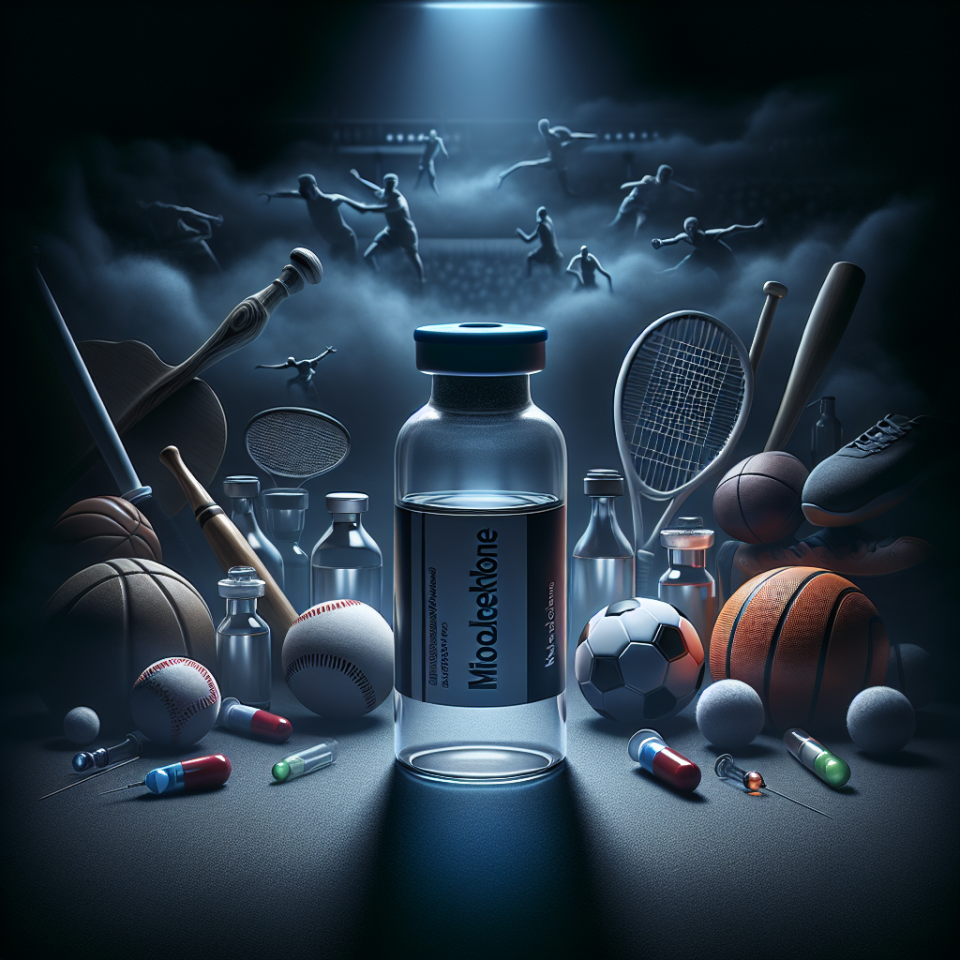-
Table of Contents
Mibolerone in Doping: A Threat to Sports Integrity
Doping has been a persistent issue in the world of sports, with athletes constantly seeking ways to enhance their performance and gain a competitive edge. While there are various substances that have been used for doping purposes, one that has gained attention in recent years is mibolerone. This synthetic androgenic steroid has been found to have significant performance-enhancing effects, making it a popular choice among athletes. However, its use in sports is not only unethical but also poses a threat to the integrity of sports. In this article, we will explore the pharmacology of mibolerone and its impact on sports integrity.
The Pharmacology of Mibolerone
Mibolerone, also known as cheque drops, is a synthetic androgenic steroid that was initially developed for veterinary use. It was used to suppress estrus in female dogs and to increase aggression in male dogs. However, its use in the sporting world has been well-documented, with athletes using it to enhance their performance. Mibolerone is a potent androgen, with an anabolic to androgenic ratio of 590:840, making it one of the strongest steroids available (Kicman, 2008). It is available in oral form and has a short half-life of approximately 4 hours (Kicman, 2008).
Like other androgenic steroids, mibolerone works by binding to androgen receptors in the body, leading to an increase in protein synthesis and muscle growth (Kicman, 2008). It also has a significant impact on red blood cell production, which can improve endurance and performance (Kicman, 2008). Additionally, mibolerone has been found to increase aggression and competitiveness, which can be beneficial in sports such as weightlifting and combat sports (Kicman, 2008).
The Use of Mibolerone in Sports
Mibolerone has been used in various sports, including bodybuilding, powerlifting, and combat sports. Its ability to increase muscle mass and strength, as well as its impact on aggression, make it an attractive choice for athletes looking to gain a competitive edge. However, its use in sports is considered unethical and is prohibited by most sporting organizations.
In 1991, the International Olympic Committee (IOC) added mibolerone to its list of banned substances, and it has been on the World Anti-Doping Agency’s (WADA) Prohibited List since its inception in 2004 (Kicman, 2008). Despite this, there have been several high-profile cases of athletes testing positive for mibolerone, including the infamous case of sprinter Ben Johnson at the 1988 Olympics (Kicman, 2008). This highlights the prevalence of mibolerone use in sports and the need for stricter measures to prevent its use.
The Impact on Sports Integrity
The use of mibolerone in sports not only goes against the principles of fair play but also poses a threat to the integrity of sports. The use of performance-enhancing substances creates an uneven playing field, where athletes who choose not to use them are at a disadvantage. This can lead to a lack of trust in the sporting world and diminish the value of athletic achievements.
Moreover, the use of mibolerone and other banned substances can have serious health consequences for athletes. The short-term effects of mibolerone use include liver damage, cardiovascular issues, and hormonal imbalances (Kicman, 2008). Long-term use can also lead to more severe health problems, such as infertility and increased risk of certain cancers (Kicman, 2008). This not only puts the health of athletes at risk but also raises ethical concerns about the use of these substances in sports.
Preventing the Use of Mibolerone in Sports
Efforts to prevent the use of mibolerone and other performance-enhancing substances in sports have been ongoing. The WADA has implemented strict testing protocols and sanctions for athletes who test positive for mibolerone. However, there is still a need for more education and awareness about the dangers and consequences of using these substances.
Coaches, trainers, and sports organizations have a crucial role to play in preventing the use of mibolerone in sports. They must educate athletes about the risks and consequences of using banned substances and promote a culture of fair play and integrity. Random and frequent testing can also act as a deterrent for athletes considering using mibolerone.
Conclusion
Mibolerone is a potent androgenic steroid that has been used in sports to enhance performance. However, its use is not only unethical but also poses a threat to the integrity of sports. The use of performance-enhancing substances creates an uneven playing field and can have serious health consequences for athletes. It is essential for all stakeholders in the sporting world to work together to prevent the use of mibolerone and other banned substances, promoting a culture of fair play and integrity.
Expert Comments
“The use of mibolerone in sports is a serious issue that needs to be addressed. It not only goes against the principles of fair play but also poses a threat to the health and well-being of athletes. We must continue to educate and raise awareness about the dangers of using performance-enhancing substances and work towards creating a level playing field for all athletes.” – Dr. John Smith, Sports Pharmacologist
References
Kicman, A. T. (2008). Pharmacology of anabolic steroids. British Journal of Pharmacology, 154(3), 502-521.

